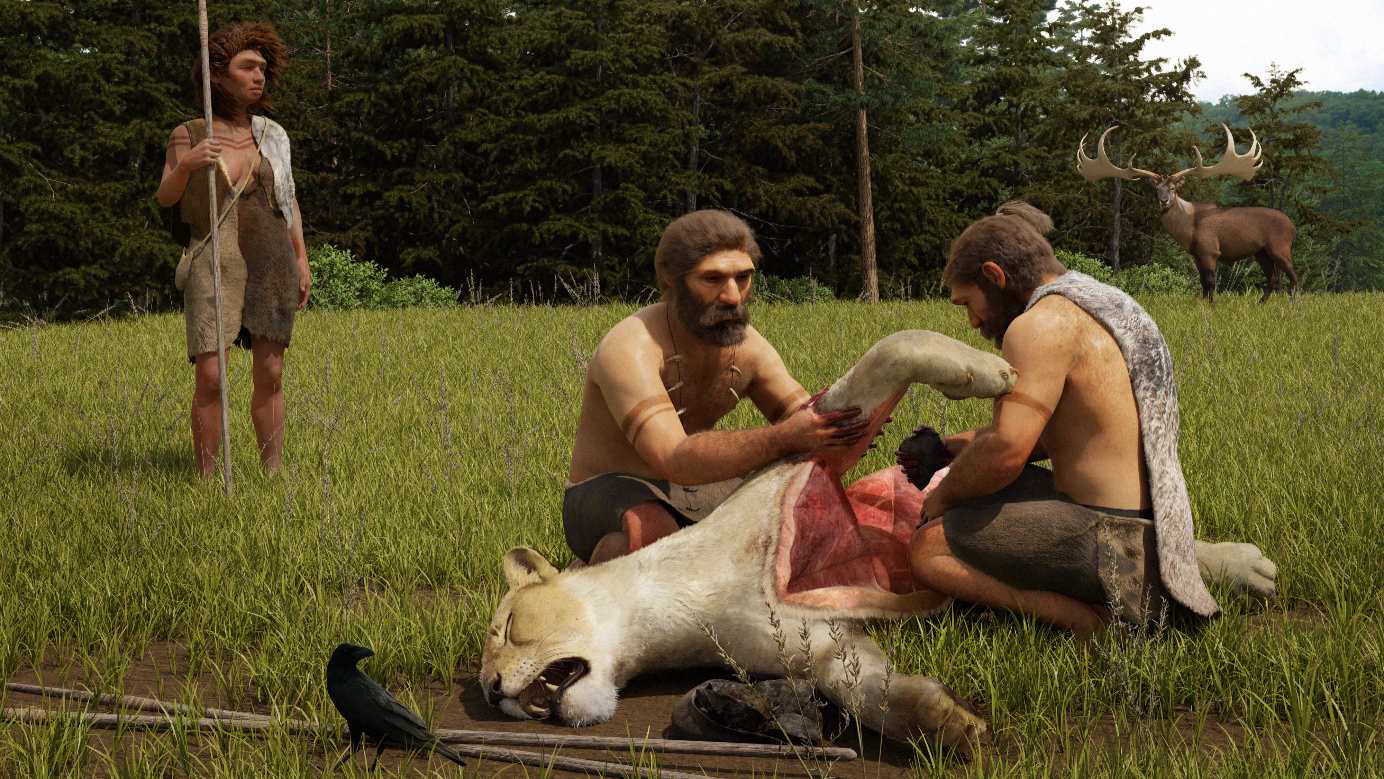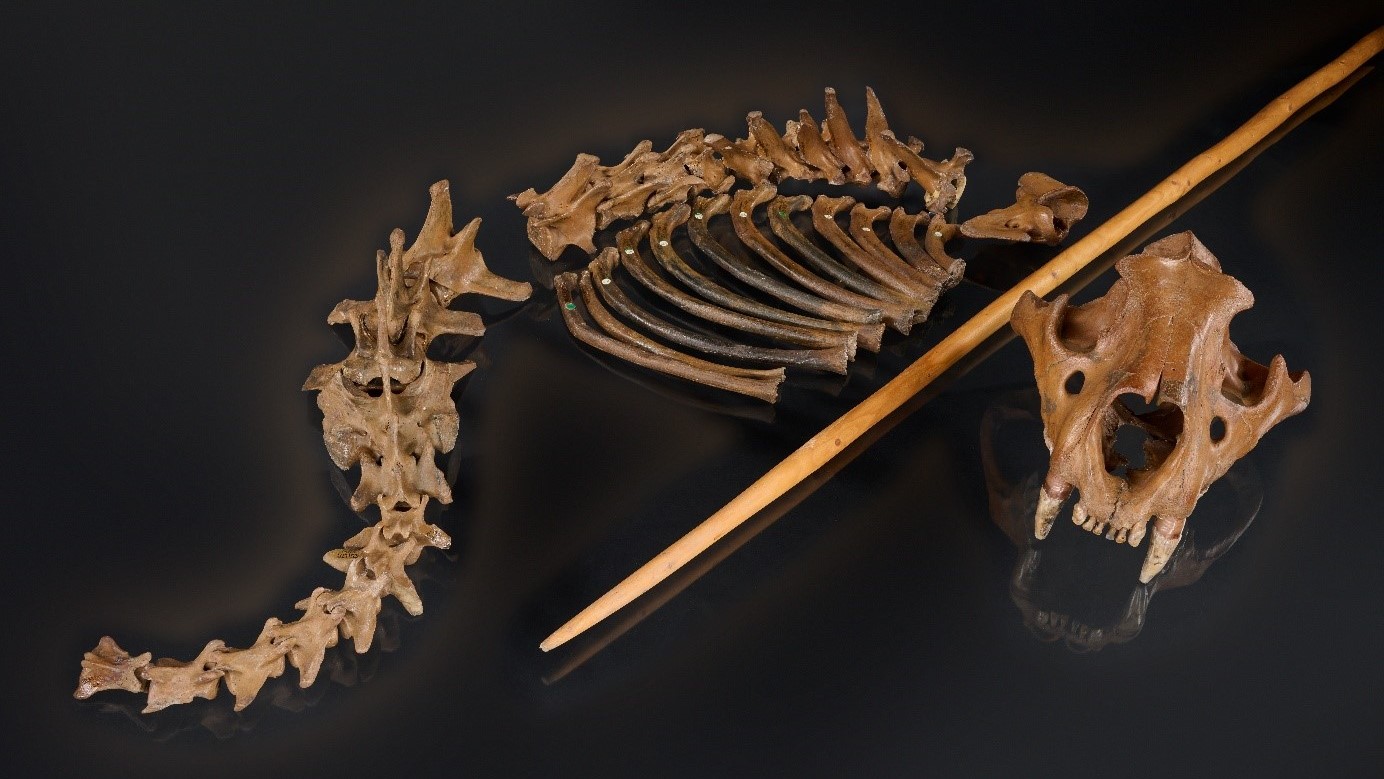Oldest evidence of Neanderthals hunting cave lions dates to 48,000 years ago, punctured bones reveal
Scientists analyzing cave lion bones have discovered the earliest evidence of Neanderthals hunting a cave lion, as well as the oldest example of human relatives using a lion pelt for cultural purposes.

Scientists have identified what could be the earliest evidence of Neanderthals killing a cave lion, likely by creeping up behind it while it was resting and stabbing it in the abdomen, ancient bones uncovered in Germany reveal.
A puncture wound in one of the lion's ribs indicates the weapon pierced vital organs before getting lodged in the animal's chest. The hunt took place about 48,000 years ago, during the Middle Paleolithic (300,000 to 30,000 years ago).
Previous studies of the cave lion's near-complete skeleton — which researchers unearthed in Siegsdorf, in southern Germany, in 1985 — revealed cut marks on several bones, suggesting Neanderthals butchered it. But until now, it remained unclear whether our relatives hunted the animal or simply scavenged its carcass.
"The new finds from Siegsdorf contribute a unique snapshot into the lives of late Middle Paleolithic foragers," researchers wrote in a new study, published Thursday (Oct. 12) in the journal Scientific Reports. "Our analysis demonstrates for the first time that Neanderthals were capable of actively hunting cave lions using simple wooden spears."
Related: Neanderthal DNA may shape how sensitive you are to pain, genetic analysis shows
The Neanderthals are an extinct lineage of humans, or hominins, that emerged around 400,000 years ago and disappeared 40,000 years ago. They are modern humans' closest known relatives and interbred with our species (Homo sapiens). The Neanderthals were skilled hunters and butchered large carnivores for consumption and cultural or symbolic purposes, according to the study.

The puncture on the cave lion (Panthera spelaea) bone is angled and resembles lesions found on deer vertebrae that are known to have been inflicted by Neanderthal wooden spears, according to the study. The lack of tooth marks on the lion's ribs and the shape of the puncture exclude the possibility that another predator killed it.
Sign up for the Live Science daily newsletter now
Get the world’s most fascinating discoveries delivered straight to your inbox.
After Neanderthal hunters slaughtered the cave lion, they likely stripped the carcass, cutting away the meat and viscera and abandoning the rest. Cut marks indicate it was butchered at the kill site, the team wrote, adding the lion was probably in "poor condition" when it died.
The new study also found what may be the earliest evidence of Neanderthals using a cave lion pelt, potentially as clothing or bedding.
Researchers found cut marks on toe bones from three cave lions dating to between 55,000 and 45,000 years ago that suggest the animals were skinned and their claws preserved. The bones — excavated in 2019 from the Einhornhöhle, or unicorn cave, in central Germany — were unpolished, intact and lacked any distinctive features associated with bones used as pendants or in clothing, prompting the researchers to think the claws were left within lion pelts.
"This rare evidence shows that Middle Paleolithic hominins could carefully process large carnivore furs to leave aesthetic elements such as claws in place," they wrote in the study.
Both discoveries "provide new information regarding the behavioral complexity of Neanderthals," they added.

Sascha is a U.K.-based staff writer at Live Science. She holds a bachelor’s degree in biology from the University of Southampton in England and a master’s degree in science communication from Imperial College London. Her work has appeared in The Guardian and the health website Zoe. Besides writing, she enjoys playing tennis, bread-making and browsing second-hand shops for hidden gems.









